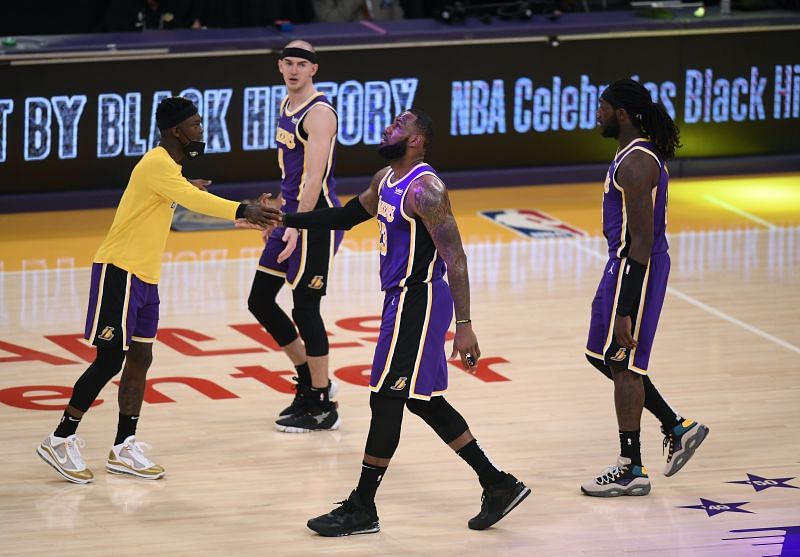
Looking at the LA Lakers' struggles this season and ways to solve them
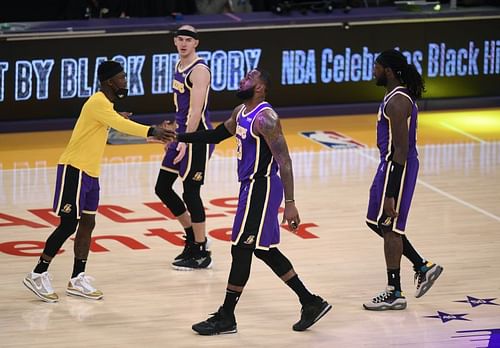
LeBron James and the LA Lakers are halfway through their season and there have been questions about their ability to again be NBA champions. A recent four-game losing streak, one that was snapped only after Dennis Schroder returned to the lineup, exposed the Lakers’ glaring weaknesses and most pressing needs.
The absence of Anthony Davis due to injury isn’t the plain and simple reason why the LA Lakers are having difficulties, especially against the top teams in the league. While they were on a seven-game winning streak last month, the Lakers were already flirting with disaster, even with Davis in the lineup.
On more than one occasion, they had to come back from double-digit deficits. Even when they had a double-digit advantage themselves, they had to fend off their opponent who was making a run.
Everything came crashing down the moment Davis and Schroder were unable to play at the same time and suddenly, the LA Lakers’ much vaunted depth was tested like never before.
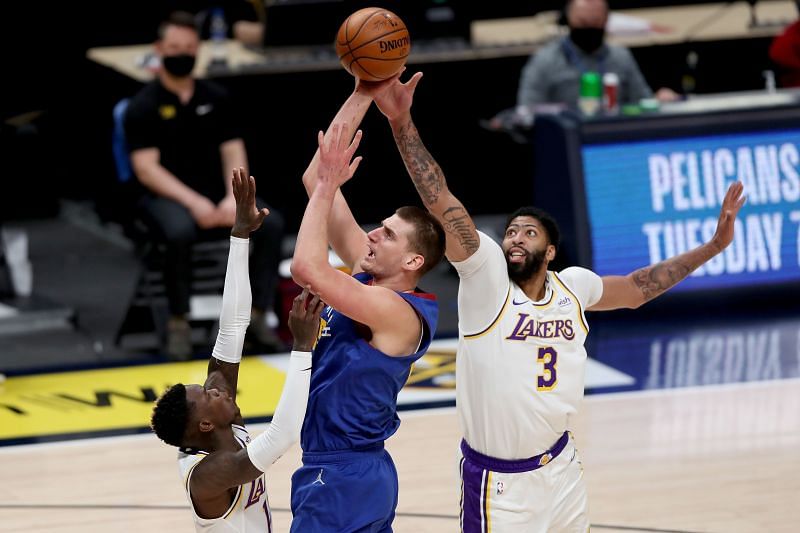
So why are the LA Lakers struggling after starting the season at 15-6? Let’s look into their problems and possible solutions.
1. Problem: The LA Lakers are tired
It was discussed before the season started that the LA Lakers would have issues with the lack of rest between campaigns. With only two months of rest between last season and the current one, there has been a visible lack of energy on the floor lately for the Lakers and it shows at the beginning and the end of games.
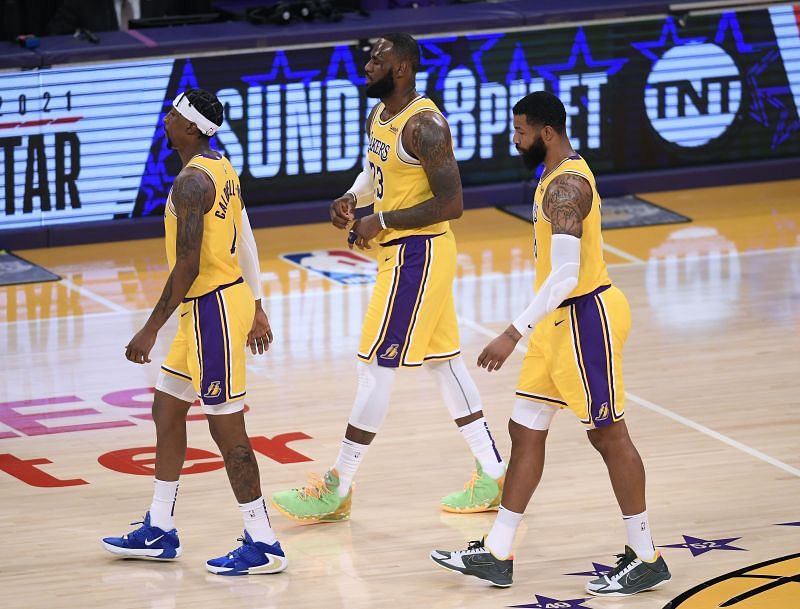
A number of slow starts have led to the LA Lakers needing a big burst in the final minutes of the game for them to catch up. At other times, they didn’t have the energy to try and make a run at all.
Since July 30, when they played their first game in the NBA bubble in Orlando last season, to their loss to the Sacramento Kings on Mar. 3, the Lakers have played 66 games. That’s the most of any team in the league during that span, including their Finals foil, the Miami Heat (65).
Despite this, as Kyle Goon of the OC Register pointed out recently, if their record was compared to those of the three other teams’ in the last two rounds of the 2020 NBA Playoffs, the LA Lakers’ 24-13 is superior to theirs.
The Lakers had been getting by on talent alone earlier this season. Not anymore.
Clearly, the Lakers, Heat (18-18), Boston Celtics (19-17) and Denver Nuggets (21-15) are feeling the physical drain of the pandemic-influenced schedule.
Simply put, the LA Lakers are tired and feeling the toll now after nearly 40 games under their belt while playing eight back-to-back games. This is just one less than they played during the first 71 games of last season.
It won’t get any easier as the LA Lakers have eight back-to-back games to go in their last 35 games.
Solution: Switch up starting lineup/rotation, put teams away early
The LA Lakers have made Talen Horton-Tucker an integral part of their rotation after he saw very little playing time during his rookie year. Compared to the other players on the Lakers’ rotation, he has the least amount of wear-and-tear on his body since last season.
Coach Frank Vogel could switch up the starting lineup during the second half of the year and replace Kentavious Caldwell-Pope with Horton-Tucker. The sophomore guard should add energy and a sense of urgency to the LA Lakers’ first quarter attack.
Even if he doesn’t start, Horton-Tucker can be inserted into the lineup early to perk up the Lakers offensively.
If they can put teams in their rear-view mirror early, it would give the starters more time to rest in the last minutes of a ballgame. Their win against the Golden State Warriors is a perfect example of this.
There’s a reason why the recently acquired Damian Jones has worked so well in his few games with the LA Lakers. He has the energy and spunk that they are sorely lacking.
If Vogel can get away with Jones (if they sign him to a second 10-day contract) being in the lineup early, this would give the regulars more rest during games.
2. Problem: The LA Lakers' slow pace
You won’t notice it at first glance but the LA Lakers play at a slow pace that is in stark contrast to how many of their opponents have been playing against them. Though not as deliberate as the Cleveland Cavaliers teams of coach Mike Fratello back in the 90s, the Lakers have often been taking their time before getting into their offense.
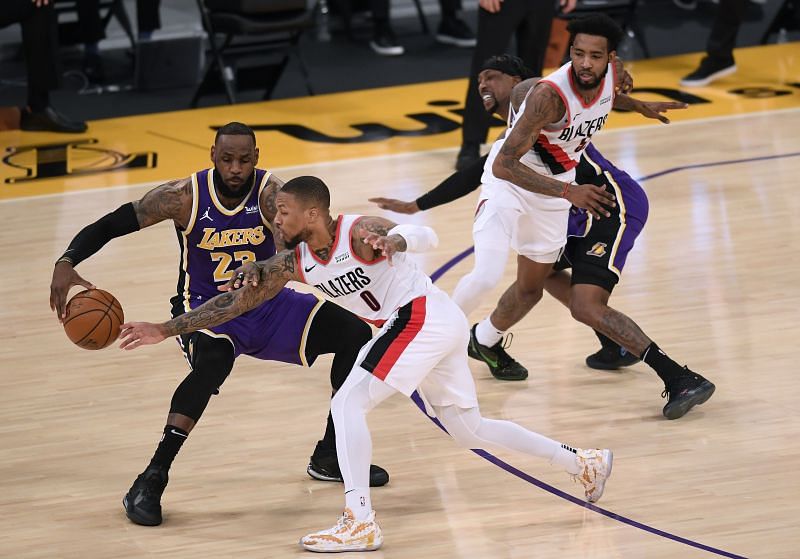
Part of the blame lies with LeBron James, who has a tendency to size up the defense in the final minutes of the fourth quarter before hoisting a shot late in the clock.
In the Phoenix Suns game on Tuesday, with the LA Lakers down by 10 and less than a minute remaining, James didn’t make a move until there were only 10 seconds left on the shot clock at a time when they needed to pick up the pace.
The Lakers are an experienced team with several veterans on the roster, but they also have a number of relatively young legs who can run with the best of them. Yet, the LA Lakers play at a pace that’s slower than most teams in the NBA at 98.75, which is 23rd in the entire league.
In the fourth quarter of games this season, that pace has slowed down even further to 93.84, which ranks them dead last in the league. This seems to be the product of fatigue from the wear-and-tear of playing in last year’s championship.
It could also be a case of the LA Lakers merely taking their foot off the gas pedal thinking they can pick up the pace when necessary in the waning moments of a tight contest.
What’s more concerning for the Lakers is how often the other players stand around and watch James initiate the offense without any movement off the ball. It’s a recipe for disaster that has cost them a number of games.
Solution: Utilize Dennis Schroder and Alex Caruso as playmakers
One of the best ways to get the LA Lakers' offense moving is by getting the ball out of LeBron James’ hands and letting their other ball handlers have a crack at it at different points in the game. At this stage in his career, James should be looking for ways to affect a ballgame without the ball in his hands all the time.
Putting him in the post with Dennis Schroder and Alex Caruso taking turns to initiate the offense should create more ball and player movement. James has already proven to be deadly in the post with his ability to both score and find the open man.
There are times when James coughs up the ball in succession for stretches and this move will help him avoid that while giving the LA Lakers a more free-flowing offense.
3. Problem: The LA Lakers’ 3-point shooting woes
There was a time this season when Caldwell-Pope and Caruso were in the top three in 3-point percentage along with the Brooklyn Nets’ Joe Harris. That seems like a long time ago as the two have fallen out of the top 50 with Harris remaining in the top spot.
As a team, the LA Lakers have reverted to last season’s 3-point shooting habits. In other words, they have refused to adapt to the changing landscape where teams are now hoisting more threes than ever while they have remained relatively the same.
The LA Lakers are currently making 10.8 3-pointers (27th) while taking 30.8 attempts (25th) a game. Percentage-wise, they are only making 35.1 percent (24th) of their shots from three.
“We have to make some shots from the exterior,” James said. “We’re really good in the paint. We do a good job with that, but we’re not making threes. We’re not getting to the free-throw line. And it’s been very difficult on our team to score.”
This has been alarming for the LA Lakers, to say the least. They are only 17th in offensive rating (111.3) whereas they were No. 4 a year ago before the league shut down operations in mid-March.
As teams have improved their 3-point shooting since last season, the LA Lakers have stayed the same.
CBS Sports’ Sam Quin wrote earlier how three of the LA Lakers’ top rivals for the title have adapted to the upward trend in 3-point shooting this season.
“The Clippers, Nets and Jazz are the NBA's three leaders in 3-point percentage,” wrote Quinn.
“That doesn't quite do their success justice. With all three now shooting at least 39.8 percent from behind the arc, they are all currently on pace to finish among the top-20 3-point shooting teams in NBA history.”
In their meetings against the three teams Quinn mentioned, the LA Lakers lost all three games with 3-point shooting being a major culprit.
Solution: Create more shots from the 3-point line
As teams have made the leap this season to hoist more and make more 3-pointers, the LA Lakers have no choice but to adapt to the trend. It used to be that the Lakers shunned the three when Magic Johnson was still calling the shots in the front office.
Now, however, they have no excuse given that they have the personnel to turn the three into a weapon of choice.
The All-Star break should give Vogel and his staff time to incorporate changes into their offense heading into the second half of the season.
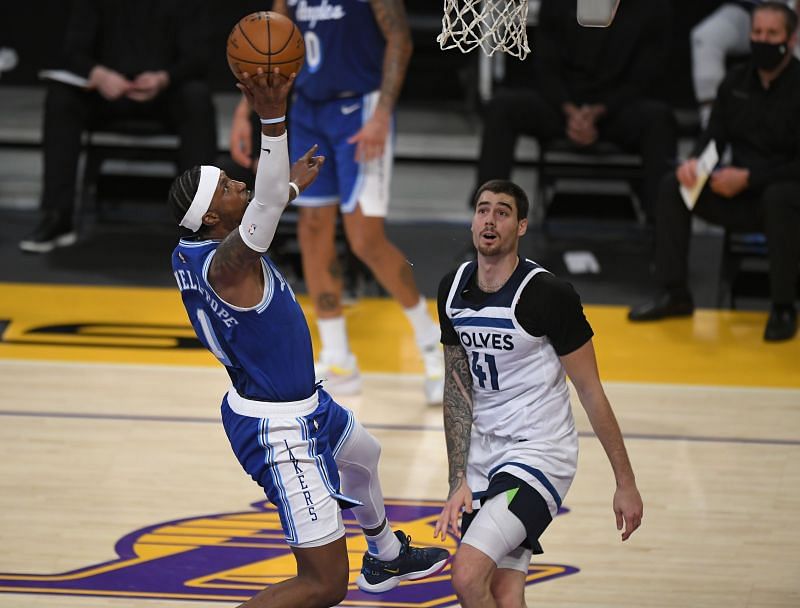
Caldwell-Pope (40.2) and Caruso (40.0) are two of the LA Lakers' top three shooters from 3-point territory (seldom-used Alfonzo McKinnie is first at 41.7) and yet they’re taking less than four shots from long distance.
Compare that to three of the top four shooters from behind the arc who are attempting at least five per game.
If the LA Lakers increase their pace (as previously noted), this should give these two shooters more opportunities. But that’s only part of the solution. Vogel has to create plays for them along with Kyle Kuzma (36.5) and Marc Gasol (36.5 percent).
This will give them the option to shoot ala Jordan Clarkson of the league-leading Utah Jazz.
This should open things up for the LA Lakers and lessen the offensive burden on their top guns moving forward.
Also Read: NBA Trade Rumors: Sacramento Kings listening to offers for Marvin Bagley III